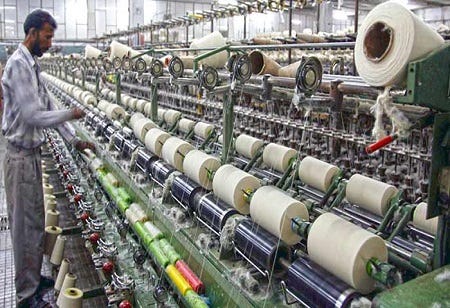Budget boost to revitalize India's textile and leather sectors
The Indian government has unveiled a comprehensive package aimed at transforming the textile and leather industries. A significant 28 per cent increase in the Budget allocation for textile schemes to Rs 4,417.03 crore signals a strong commitment to this vital sector.
Key highlights of the Budget
Export promotion: To make Indian textiles and leather products more competitive in the global market, the government has announced a reduction in Basic Customs Duty (BCD) on real down filling material derived from duck or goose. This is expected to lower production costs and improve export margins for the domestic industry.
Additionally, the list of exempted goods for the manufacture of leather and textile garments, footwear, and other leather articles for export has been expanded. This move is seen as a direct response to industry demands for a more conducive export environment. The simplification and rationalization of the export duty structure on raw hides, skins, and leather are also expected to provide much-needed relief to exporters
Skill development: A massive investment in training 20 lakh youth and upgrading industrial training institutes will create a skilled workforce to meet industry demands.
MSME support: The Budget has placed a strong emphasis on supporting MSMEs and promoting labor-intensive manufacturing. A comprehensive package covering financing, regulatory reforms, and technology support has been formulated to help MSMEs grow and compete globally. A Credit Guarantee Scheme has been introduced to facilitate term loans for MSMEs to acquire machinery and equipment without the need for collateral or third-party guarantees. This is expected to improve access to credit for MSMEs, which is often a major hurdle in their growth journey.
To streamline the credit assessment process for MSMEs, public sector banks will build in-house capabilities and develop a new credit assessment model based on digital footprints. This will enable faster and more accurate credit appraisal, especially for MSMEs without formal accounting systems.
A new mechanism has also been announced to provide continued bank credit to MSMEs during stress periods, helping them avoid slipping into the Non-Performing Asset (NPA) category.
To facilitate exports, E-Commerce Export Hubs will be established in a public-private partnership model, providing a single-window platform for trade and export-related services.
Infrastructure development: Investment in industrial parks and worker housing will create a conducive environment for businesses to thrive.
Industry leaders have applauded the budget's focus on addressing key challenges faced by the sector. The measures announced are seen as a catalyst for growth, job creation, and increased exports.
The Southern India Mills’ Association (SIMA) chairman S K Sundararaman has welcomed the announcement of reducing the BCD on Methylene diphenyl diisocyanate (MDI) used for the manufacture of spandex yarn from 7.5 per cent to 5 per cent to address the duty inversion, enhancing the global competitiveness of textile goods manufacturers using such yarn. He has said that use of spandex yarn has been increasing exponentially and hoped that the domestic manufacturers of spandex yarn would pass on the benefit to the downstream sectors. He welcomed the allocations granted by the Finance Ministry for exports i.e., RoDTEP and RoSCTL with an increase of 5.8 per cent and 10 per cent for the year 2024-24 as compared to 2023-24, a much-needed boost when the textile exports are on the downward trend due to various external factors.
Rakesh Mehra, Chairman of the Confederation of Indian Textile
Industry (CITI) sees the budget as a forward-thinking one that addresses several key issues for the overall growth of the Indian economy. However, the stagnation in the textile and apparel industry needed some bold measures for capacity building, modernisation and cost competitiveness. “MSME accounts for about 80 per cent of the Indian textile industry. The credit assurance schemes announced today will provide the much-needed impetus to the growth of large number of textile and garment MSMEs and enable them to expand
their operations and innovate.” The increased focus of government towards skilling and the announcement of the Employment Linked
Incentive scheme coupled with the decision of easing the FDI norms will facilitate new investments in the textile industry. Moreover, the financial support for clean energy transition, energy initiatives, and
energy audits underscores the government's commitment to sustainable development.
With a strategic emphasis on skill development, export promotion, and MSME support, the government aims to position India as a global leader in the textile and leather industries.

